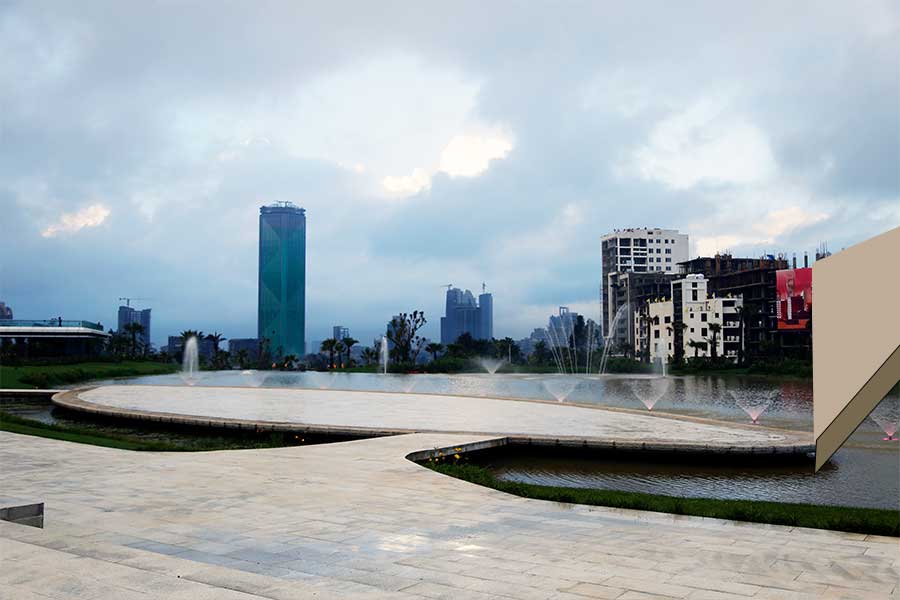
Advertorials | Aug 02,2024
As I was contemplating about making a New Year’s resolution, the word “new” brought some déjà vu from the past, my college days. Back then, suggested readings for the courses we took was rare. There was no shortage of readers for what, in most cases, were older editions, no matter how poor our reading culture. The problem was that there were way too few books and too many graduates, as few as we were at the time.
Then a fresh idea came up to prepare and distribute handouts from some of the academic staff. Just the argument on the necessity of this was enough to divide the staff. For us, this definitely helped, as we could take time grasping the subject matters we were studying, going through them over and over again.
Still, there was always the kerfuffle to take the front seat, to be as close to the instructor as possible in the big halls where the lectures took place. A non-interactive session starts and finishes in lightning speed as we struggle to jot down everything, never a word to drip out from what the instructor says.
Next, I thought about an item that decades ago was an exciting new addition to the preparation and delivery of presentations – the PowerPoint. It partly did away with the chalkboard but was not as easy as we would like to imagine it now. This was because there were no drives for storing the smallest kilobyte of data. They had to be loaded onto floppy disks, a process that itself took no small amount of time.
Once in those days, a higher-level strategic management training was staged at a government agency. During the presentation, the participants continuously moved along with each slide with great enthusiasm. Then the participants, drawn from the strategic apexes of several public enterprises, lost pace all of a sudden. The presenter was completely absorbed by his slides; he did not notice what went on among them.
The participants of the room had been too absorbed with the red laser pointer hovering on the screen, wondering why it was anywhere the facilitator wished to point within a fraction of a second. The trainees were fumbling their way along this clueless labyrinth of suppositions about what it may be, its source and what swung the laser to point. That continued until the clock struck for a break.
One can assume that today being in school and in the classroom, mainly in the higher academic institutions, is completely different from our days. If they struggle with books, students will probably be getting papers and handouts in addition to digital copies of books and other resources. They can even go to YouTube for a lecture on the course with far greater depth.
Surprisingly, this phenomenon is not appreciated. Recently, I asked a young man who graduated a decade ago as an IT professional. He told me about his stay in college. He said it all went well, yet it was not until he and his friends were only left with two semesters they learned its importance. This was when a young lecturer joined their college.
Apparently, he had mastered the art of presentations and lectures, grabbing his students’ ever-shrinking attention span. His lectures were not overbearing but clear and concise with the speed and impact of the laser pointer. He also had a laser pointer, as does the IT professional who uses one for his presentations. He had passed it to me, and my New Year’s resolution is to pass it to others and for a Happy New Year.
PUBLISHED ON
Sep 10,2021 [ VOL
22 , NO
1115]


Advertorials | Aug 02,2024

Radar | Nov 16,2024

Radar | Apr 24,2021

Radar | Mar 19,2022

Fortune News | May 27,2023

View From Arada | Nov 14,2020

View From Arada | Sep 19,2020

Fortune News | Sep 18,2022

Editorial | Jan 01,2022

Radar | Aug 30,2025

Dec 22 , 2024 . By TIZITA SHEWAFERAW
Charged with transforming colossal state-owned enterprises into modern and competitiv...

Aug 18 , 2024 . By AKSAH ITALO
Although predictable Yonas Zerihun's job in the ride-hailing service is not immune to...

Jul 28 , 2024 . By TIZITA SHEWAFERAW
Unhabitual, perhaps too many, Samuel Gebreyohannes, 38, used to occasionally enjoy a couple of beers at breakfast. However, he recently swit...

Jul 13 , 2024 . By AKSAH ITALO
Investors who rely on tractors, trucks, and field vehicles for commuting, transporting commodities, and f...

Oct 18 , 2025
The political establishment, notably the ruling party and its top brass, has become p...

Oct 11 , 2025
Ladislas Farago, a roving Associated Press (AP) correspondent, arrived in Ethiopia in...

Oct 4 , 2025
Eyob Tekalegn (PhD) had been in the Governor's chair for only weeks when, on Septembe...

Sep 27 , 2025
Four years into an experiment with “shock therapy” in education, the national moo...